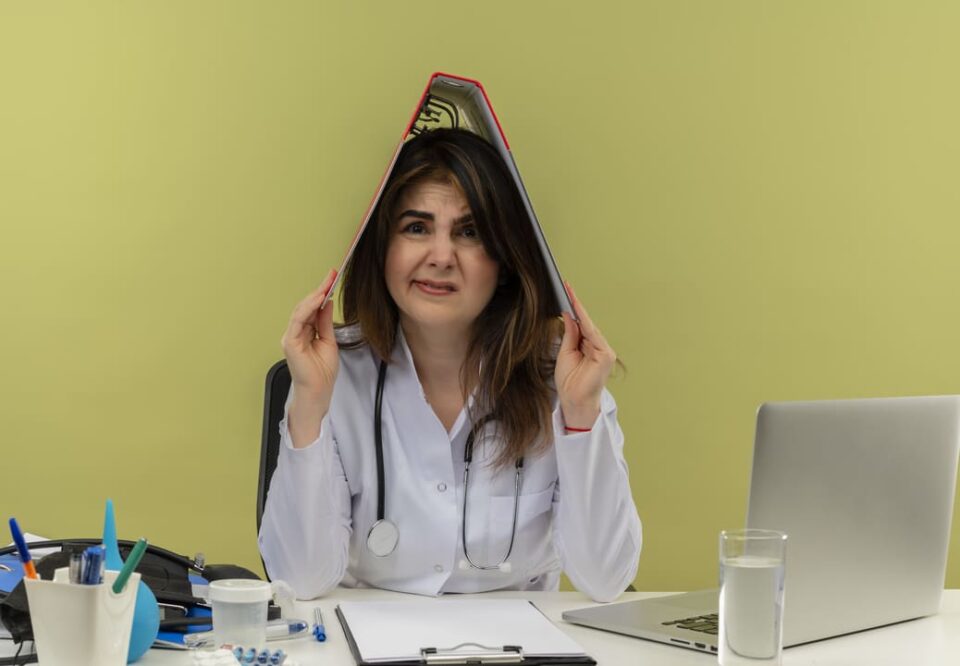The timeless wisdom of Ayurveda never ceases to amaze. Amongst its profound concepts is anumana pramana – an inferential diagnostic framework that I believe healthcare desperately needs today. It’s a brilliant tool for uncovering the true roots of disease.
Anumana pramana is one of Ayurveda’s fundamental pramanas, or means of obtaining valid knowledge. It is the principle of inference based on keen perception, reason, and prior learning. Going beyond just analyzing superficial symptoms, involves logically inferring the underlying causes, current state, and future trajectory of health by examining related signs, habits, and events.
For example, upon seeing smoke rising from a mountain, one can infer the presence of fire, even without directly perceiving it. Similarly, by studying a patient’s pulse (nadi pariksha), tongue, complexion, and demeanor, an experienced Ayurvedic doctor can deduce the person’s underlying physiological and psychological imbalances (vikriti), constitution (prakriti), state of tissues (dhatus) and digestive fire (agni). This enables highly targeted treatment.
Such root-cause diagnosis is sorely lacking in these days, which over-relies on suppressing symptoms. By carefully studying the background and context to connect the dots, anumana pramana reveals the full story behind the disease. It uncovers the complex web of diet, lifestyle, emotions, relationships, and karmic patterns shaping an individual’s health.
What anumana pramana respects is the profound interconnectedness of all things. No symptom arises in isolation. By tracing its web of influences, Ayurveda treats people, not just diseases. This is real personalized medicine, not the mere customization of drugs.
The inferential power of anumana pramana can predict future disease by detecting subtle signs (purvarupa). For example, observing mild chest discomfort, shortness of breath, and fatigue in a person with unhealthy habits can foresee an impending heart attack (hridroga). This allows preventive lifestyle changes and treatment before the condition becomes severe.
Fascinatingly, anumana pramana can even infer past events shaping current health, including those from past lives. As Ayurveda recognizes punarjanma, it sees chronic and genetic issues as karmic carryovers from unresolved past impressions (samskaras). An astute Ayurvedic assessment can reveal such deep-rooted influences and help resolve them.
By grasping the continuum of cause and effect, an Ayurvedic doctor can unfold the full trajectory of an illness – its causative factors (hetu), early signs (purvarupa), manifest symptoms (rupa), complications (upadrava) and outcomes. This allows highly precise, proactive, and personalized care.
What’s more, anumana pramana can be applied to research. It yields testable hypotheses drawn from clinical insights. For example, observing the impact of different mental states on digestive issues can lead to studies on how specific emotions affect the microbiome. Such research, directed by time-tested classical wisdom, can be uniquely productive.
Anumana pramana also has powerful meta-cognitive effects. When patients understand the roots of their issues, it motivates them to adopt healing diets and lifestyles. Self-awareness enables self-healing. An Ayurvedic doctor is an educator, empowering people to take charge of their well-being.
The implications of anumana pramana are profound. It can make modern medicine more accurate, preventive, personalized, and participatory. By reconnecting effects to causes, it can solve chronic disease at its source.
Yet to master anumana pramana, we must first re-learn the lost art of perception. Our rushed, distracted modern minds overlook the obvious. We obsess over tests while failing to listen to patients. Ayurveda trains the mind to observe with panoramic, penetrating awareness. Only by expanding our consciousness can we notice the subtle clues to disease.
Inference must be grounded in both experiential insight and textual expertise. By contemplating and applying classical Ayurvedic wisdom, one develops the intuitive discernment to see the clinical truth behind the data. Mere information must become illumination.
Towards this end, modern Ayurvedic education must emphasize critical thinking, not just rote memorization. Students should exhaustively analyze case studies to cultivate their skills of inference. Research should be redesigned to honor Ayurveda’s multifactorial, individualized approach. The narrow reductionism of biomedical research neglects the elegant complexity captured by anumana pramana.
Ultimately, anumana pramana is a way of seeing. It is a perceptual framework that unites objective analysis and intuitive insight. It is the convergence of science, art, and spiritual vision in service of healing. When the doctor’s consciousness expands to perceive the full context of a patient’s life, inference becomes illumination.
The restoration of anumana pramana can spark a renaissance in Ayurvedic wisdom. By reviving its brilliant tools of diagnosis, research, and education, we can unleash its immense potential for healing people and society. The future of medicine lies in its past.
So let us learn to see with the eyes of Ayurveda. By mastering the penetrating vision of anumana pramana, we can cut through surface symptoms to solve the disease at its source. We can make modern healthcare more expansive, effective, and empowering. The power to heal our future lies in the perceptual wisdom of our past.
Final Notes
• Anumana pramana is Ayurveda’s inferential tool of diagnosis based on perceptive analysis
• It identifies root causes, not just superficial symptoms, by connecting clinical signs to underlying imbalances
• It reveals the complex web of influences shaping an individual’s health, enabling personalized treatment
• Anumana pramana uses signs to predict future disease and can even uncover karmic influences from past lives
• It can make modern medicine more holistic, preventive, precise, and participatory
• Mastering anumana pramana requires reviving the lost art of perceptive and contextual awareness
• It should be emphasized in Ayurvedic education, research, and practice to restore Ayurveda’s healing power
• Anumana pramana unites objective science, intuitive art, and spiritual vision to heal people and society at the deepest level

